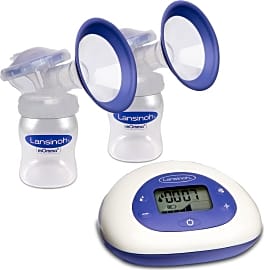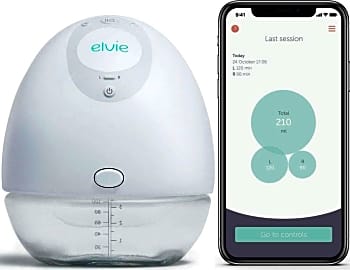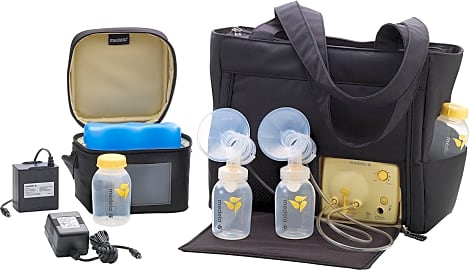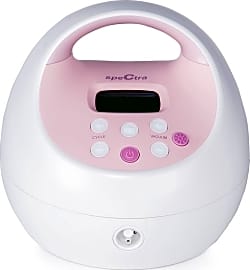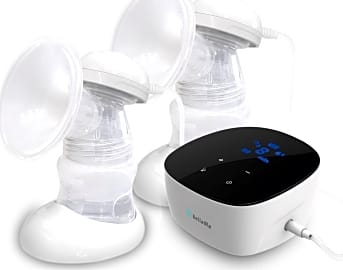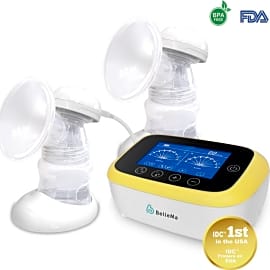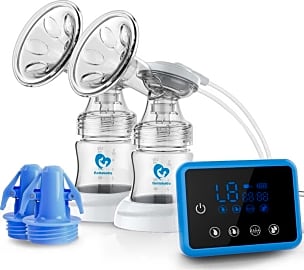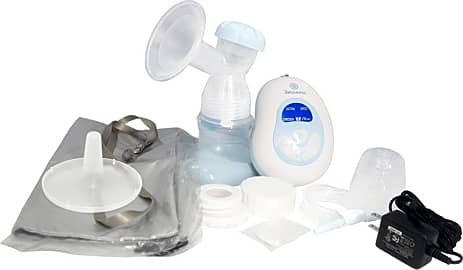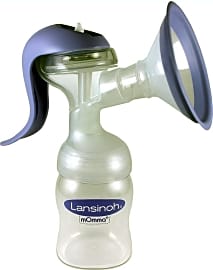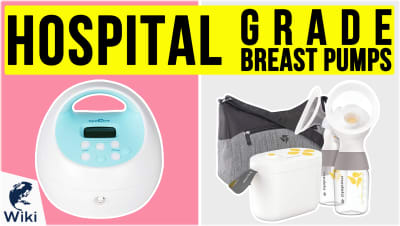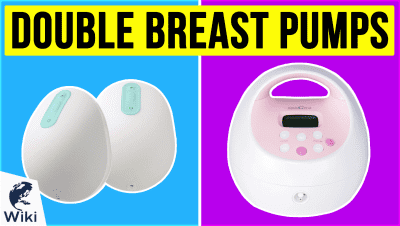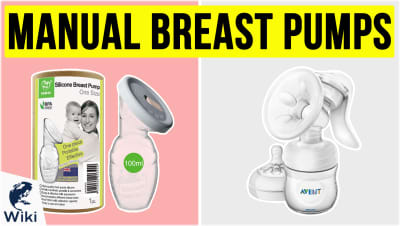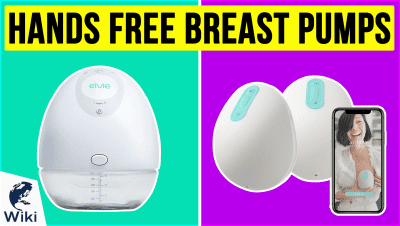The 10 Best Breast Pumps

This wiki has been updated 39 times since it was first published in May of 2015. Whether you're building a backup supply for your little one, grappling with latch and feeding issues, or seeking relief for mastitis or engorgement, a well designed and reliable pump is an essential piece of breastfeeding equipment. Our comprehensive selection includes hospital-grade and portable electric models as well as manually operated versions to suit a variety of needs. When users buy our independently chosen editorial picks, we may earn commissions to help fund the Wiki.
Editor's Notes
February 19, 2020:
With such a variety of high-quality electric options on the market, we decided to remove a pair of less effective manual models in the Haakaa Silicone and the Philips Avent Comfort, the latter of which presented a few too many issues with fit and comfort to stay in our ranking. In their places, we added the Elvie Single Silent, which connects with a convenient smartphone app for discreet use, as well as the Bellababy Double Electric Power, which offers a good amount of power when running on batteries.
We didn't hold hospital grade status as a mandate for entry to the list, as we already have a list for hospital grade pumps, but we did see fit to add an industrial solution in our special honors section with the Ardo Carum True. It's a pricey selection, to be sure, but it's the kind of thing that's durable enough to be rented out or to be used by several mothers on a daily basis.
Special Honors
Ardo Carum True Whether you own a medical practice and need an industrial strength machine to work for many years, or you're a mother intent on only using the best that money can buy, this model should grab your attention. It has a sensitive program for women who are feeling a bit tender, as well as reliable vacuum seal technology. ardo-usa.com
Proactively Pumping For Baby's Benefit
Manual pumps are typically less expensive than electric pumps, but they also require more effort from the parent and cannot extract milk from more than one breast at a time.
Nursing is a natural and biologically important part of rearing offspring, both in the human and animal world, even for creatures you'd never expect. For busy women concerned about the extra time required to feed their little ones while working or away from home, a breast pump is a very useful tool for ensuring they get the nutrition they need when direct breastfeeding is not convenient or possible.
A breast pump is a mechanical device designed to extract milk from a lactating mother for storage and feeding to an infant by a caregiver. It is considered a valuable addition or alternative to live breastfeeding. The breast pump operates in very much the same way as a milking machine does on a dairy farm. Instead of sucking milk out of the breast, the pump stimulates milk ejection via a mother's letdown reflex, which is ordinarily brought on during normal breastfeeding by a baby's sucking action on the nipple.
When the nerves of the breast have been stimulated, the oxytocin hormone is released. This hormone then encourages the muscles around the milk-producing cells to contract, thereby releasing milk into the ducts and down to the nipples. The pump stimulates the letdown reflex by using suction to first pull the nipple into the tunnel of its breast shield and then release. This pull and release action counts as a single cycle. The majority of mechanical breast pumps can achieve between thirty and sixty cycles per minute.
Breast pumps are categorized into two main types, manual and electric. Manual pumps are operated by a lactating mother through repetitive squeezing action of the device's handle. This gives the mother direct control over the amount of pressure and frequency of milk ejection. Manual pumps are typically less expensive than electric pumps, but they also require more effort from the parent and cannot extract milk from more than one breast at a time. Electric breast pumps are normally powered by an electric motor that supplies suction through plastic tubing to a horn that fits over a woman's nipple. Those components of an electric pump that come into direct contact with milk are typically sterilized to prevent contamination.
A major benefit to the electric pump is its ability to pump milk from both breasts simultaneously, making the process more efficient than that of a manual pump. Many electric pumps are also portable with their own battery packs and they can fit inside a backpack to remain inconspicuous. Finally, these types of pumps often feature an integrated milk collection system in which the storage portion of the device also functions as a feeding bottle, which prevents the need to transfer breast milk to another bottle.
These devices use either open or closed collection systems. With a closed collection system, the pump and its tubing are separated from the horn (the part that fits over the breast) by a barrier. In a closed system, the suction of the pump's electric motor lifts the barrier to create a vacuum, which extracts a woman's breast milk. By contrast, an open collection system does not use a barrier and allows for the free passage of air through the device while the suction has direct contact with the mother's breast. Open collection systems allow for greater airflow than that of closed systems, which also makes them better suited to deal with a range of breast shapes and tissue elasticity.
What's Best For A Little One
A woman's lifestyle and preference will have the greatest influence on the type of breast pump one decides to invest in. Since many electric pumps are designed with the working mother in mind, finding one with a reliable battery pack will be important. This will allow for pumping virtually anywhere that is convenient and private when not at home.
A woman must also consider the position they'll be sitting in during a pumping cycle.
Efficiency and comfort are also big considerations. Many pumps offer electric operation with breast shields made from soft and durable silicone material that won't be painful or interfere with proper nipple stimulation. Also, finding a pump with double shields will maximize efficiency for a working mother wishing to pump as quickly as possible when time is limited. On the same note, integrated feeding bottles attached to the pump will make it much easier to transport and store freshly-pumped milk for extended periods of time.
A woman must also consider the position they'll be sitting in during a pumping cycle. For that reason, pumps with angled necks allow a mother to remain in an upright position, which stimulates a natural milk flow from the breast directly into the pump itself.
Finally, when concealment and privacy are important, many pumps can operate even when remaining fully clothed through the use of collection cups that fit underneath a nursing bra.
A Brief History Of The Breast Pump
The first patent for a breast pump was filed by Orwell H. Needham in 1854. In 1864, inventor L.O. Colvin filed a patent for a similar device whose main purpose was to improve the milking process of cows. Although simplistic in nature, the process would eventually pave the way for the development of more modern breast pumps for human women. Developers continued to refine the design of the breast pump through the latter part of the nineteenth century.
The first patent for a breast pump was filed by Orwell H. Needham in 1854.
In 1898, Joseph Hoover patented a pumping device that mimicked the nursing process of a human mother and baby as closely as possible. Hoover's device was designed to encourage a continuous flow of milk along with its pulsating movement that would occur when an infant nursed at the breast.
By 1925, German immigrant and international chess champion Edward Lasker invented one of the first electric breast pumps that imitated an infant's sucking action. It was considered a major improvement to existing, hand-operated pumps of the time. Dedicating his career to helping breastfeeding mothers, Swedish engineer Einar Egnell invented the first truly comfortable breast pump in the 1950s as a response to all previous iterations of the device causing pain and difficulty with milk expression. Egnell's invention was considered a major breakthrough in breast pump research, as it set the standards for pump vacuum and cycling technology still used today by lactation consultants when judging efficiency of the device.
Hospital-grade, personal use pumps continued to emerge throughout the latter part of the twentieth century and their popularity is still going strong today.


